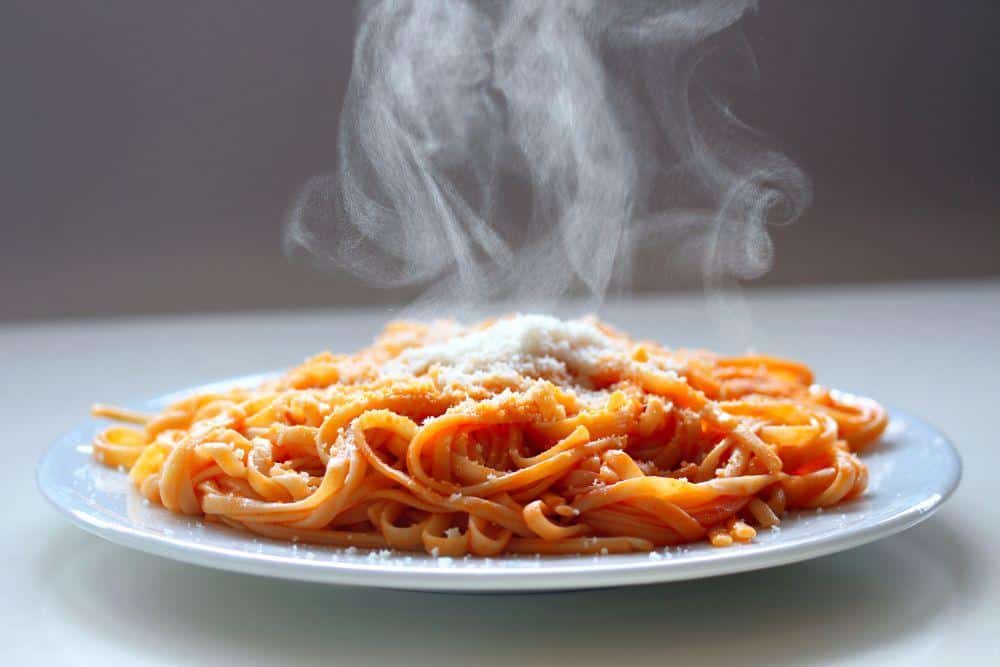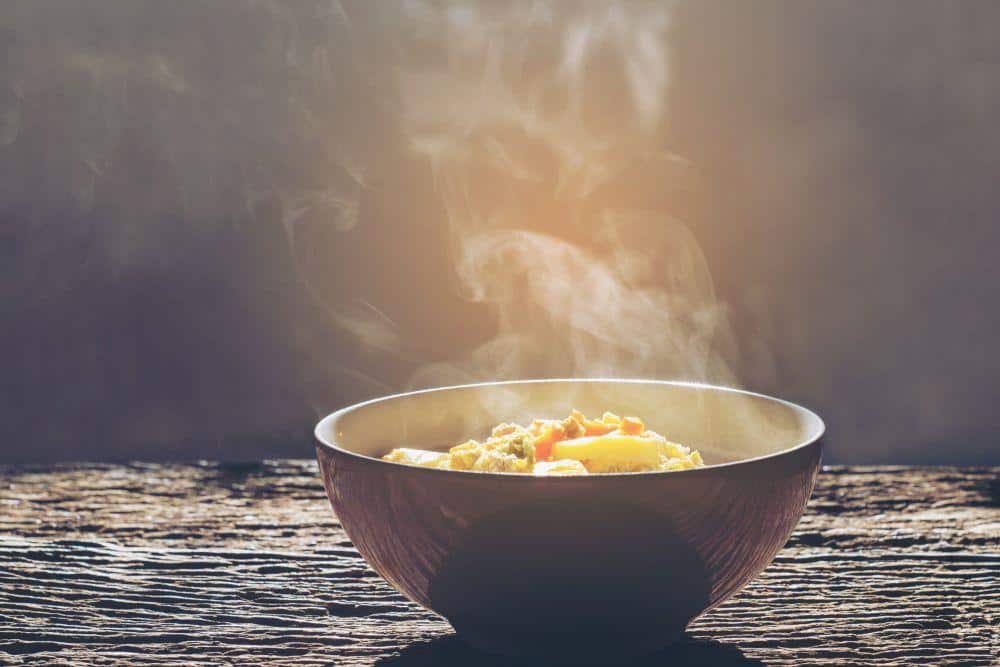Tupperware containers are a convenient way to store leftovers. They're easy to use and come in a wide range of shapes and sizes, whether one needs to store single portions or wants to put aside enough soup to feed an entire family.
Can you put hot food in Tupperware containers? Because Tupperware boxes use plastic, it's essential to follow a few rules for storing food safely, especially when dealing with hot food.
Can you put hot food in Tupperware containers? It depends. There is no simple answer since the type of food stored, and its temperature will determine whether or not it's safe to place it in a plastic container.
The main issue is that plastic is a porous material, meaning it can leak particles and absorb some substances. The pores are also an ideal breeding ground for bacteria.
Not all plastic containers are equal. Some products use high-quality plastic that won't leak chemicals easily. Some types of plastic are also more durable than others.
According to Tupperware, the brand's microwave-safe containers can withstand a temperature of up to 320°F, making them safe for storing hot food. However, plastic food storage containers from other brands can usually withstand up to 80°F. To give you an idea, a safe cooking temperature for meat is between 145 and 160°F. A safe temperature for cooking food in a microwave is 165°F.

When in Doubt, Keep Food Out of Your Tupperware Container Until it Has a Chance to Cool
Unless microwave-safe containers are available, there is a risk that your plastic food containers will leak harmful chemicals. Tupperware stopped using BPA and BPS in 2010, but plastic containers still contain other harmful substances that can end up in your food.
Resistance to heat can vary a lot from one type of plastic to another. For those who use plastic containers regularly, it's important to check the manufacturer's website and learn more about the exact composition of the containers in use.
Can you put hot food in Tupperware containers? It depends on the type of plastic used.
For instance, polyethylene terephthalate (PET) doesn't have the highest temperature resistance, making it an unsafe option for storing most hot foods. Polylactic acid has similar properties with a maximum temperature resistance of up to 140°F.
Materials like polypropylene are more resistant since this type of plastic can withstand temperatures of up to 250°F. It's a common material for microwave-safe Tupperware products.
In most cases, it's best to let food cool down for a while before putting it aside in a storage container. As a rule of thumb, food that is too hot to touch comfortably could result in a plastic container leaking dangerous chemicals.
As a rule of thumb, it's best to let food cool down for at least 30 minutes before placing it in a food storage container.
According to the USDA, it's unsafe to leave food sitting out for more than 2 hours at room temperature since bacteria will grow quickly. However, this period is only one hour if the temperature is above 90°F. Letting food cool down for 30 to 40 minutes is well within this safe time frame and prevents plastic containers from leaking harmful chemicals.

Letting Food Cool for 30 - 60 Minutes is Enough For it To Cool Down Properly Before Storage. Time will Vary Based on the Type of Food.
It might be best to let some foods cool for close to an hour. Some foods like soups or sauces tend to retain heat due to the water content.
It's possible to accelerate the cooling down process:
It's best to wait a while before closing a Tupperware. Even if the food has reached a safe temperature for the container, closing the lid can cause condensation. As hot water rises from the food, it will come in direct contact with the lid and can cause harmful chemicals to leak.
Sealing a Tupperware with hot food in it will prevent the food from cooling down quickly. It means the warmth from the food will have plenty of time to seep into the container and result in the food absorbing harmful substances.
Plus, if food can't cool down within two hours, bacteria will grow, and the food will spoil faster.
Storing hot food in a Tupperware container is unsafe for more than one reason. Storing hot food in a closed plastic container means the food will retain heat longer.
The plastic container will become a source of heat and can increase the fridge temperature by a few degrees. A large batch of hot food can significantly raise the internal temperature of a fridge and compromise everything stored in the appliance.
The ideal temperature for a fridge is at or below 40°F. It's safe to introduce food at a temperature of 40 to 60°F and let it finish cooling off in the fridge, but it's best to let food cool down outside of the appliance if it's hotter than this range.
The same applies to the freezer. Ideally, freezers should maintain a temperature of 0°F at all times. There are freezer-safe Tupperware containers, but it's important to let food reach a low temperature before freezing it since placing warm food in a freezer can cause other foods to start thawing.
Hot food isn't the only thing to be careful about when using plastic food containers. There are a few additional safety tips to keep in mind:
It's generally unsafe to microwave Tupperware containers. Microwave ovens reheat food by causing water molecules to vibrate. This vibration produces heat that the water molecules transmit to the food.
Plastic containers aren't safe because they can absorb the heat from the food the microwave is cooking. Hot temperatures can cause plastic containers to melt in the microwave or at least release harmful chemicals.
It's best to invest in microwave-safe plastic containers or to use a different kind of microwave-safe plate or container to reheat food.
Dishwasher cycles typically reach a temperature of 130 to 140°F. This temperature range is safe for plastic containers that use polypropylene and polylactic acid. Manufacturers usually indicate whether it's safe to use a dishwasher to clean the plastic containers they sell.
However, dishwasher detergent can be harsh on plastic, even if the material can withstand exposure to hot water. Repeated exposure to harsh detergent can cause a plastic container to start leaking chemicals.
It's best to wash plastic containers in the sink with regular dish soap or a mild household cleaner to be safe.
Plastic containers are a popular option because they're affordable and easy to use, but they have some limitations. There are a few alternatives to consider.
Glass containers for food storage are more durable than plastic Tupperware products. Stains and scratches won't be an issue.
Unlike plastic, glass is a non-porous material. It eliminates risks of contamination, and it's a safe option for long-term storage.
Some manufacturers also offer oven-safe glass containers, and glass is generally safe to use in the microwave and dishwasher.
The downside of glass containers is that they cost more than plastic food storage boxes and are heavier. Plus, a glass container can absorb heat and feel hot to the touch when warming up food.
Ceramic food containers are a stylish and durable alternative to plastic containers. Ceramic in itself is a porous material, but food containers have a glaze that neutralizes this property and prevents the container from leaking any substances into the food.
Ceramic food containers are safe for storing hot food. They're also safe for use in the microwave, freezer, or dishwasher.
However, vintage items can use a glaze that contains traces of lead that might end up in food. It's best to use modern store-bought ceramic food containers to store food safely.
